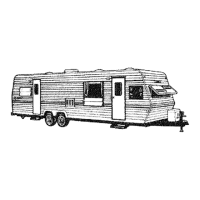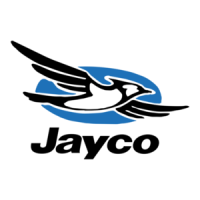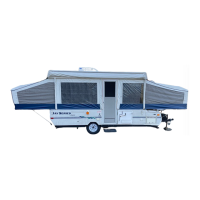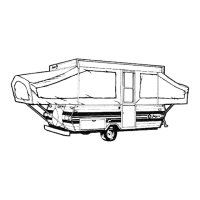It
is important
to
turn
your gas bottle valve slowly
to
eliminate a chance
of a fast rush of gas from the
tank.
This would possible "freeze" the ex-
cess flow valve and
sbut
off your gas supply. Should this happen,
turn
off
your gas valve at the
tank.
Wait about
15
minutes and try
again.
Present Codes and Standards require the use of a "Dual-stage"
LP
gas
regulator with an "excess flow"
P.O.L.
adaptor. The "excess flow'' adaptor
is built to restrict the flow of escaping gas in the event of a break in the
gas
supply line.
The "Dual-stage" regulator performs the act of reducing gas pressure in
the first stage 10-13
P.S.I.
The second stage
then
reduces it to eleven in-
ches of
W
.C.
(Water Column).
NOTE:
LP
gas regulators must always
be
installed with the diaphragm vent
facing downward. Regulators that are not in compartments have been equip-
ped with
a
protective cover. Make sure that the regulator vent faces
downward and that
the
cover is kept
in
place to minimize vent blockage
which could result
in
excessive gas pressure causing fire or explosion.
EP
GAS
CONSUMPTION
Most gas appliances are only operated intermittently. Unless there is heavy
use
of
hot water, water heater consumption is not too great. During freez-
ing
weather and high wind conditions, furnace consumption can
be
extremely
heavy.
LP
gas
consumption depends
upon
individual
use
of appliances and the length
of time operated. Each gallon of
LP
gas
produces about 91,500 BTU's
of
heat energy. Following is a list
of
typical appliance consumption when
turned
full.
on for one hour of operation:
APPLIANCE
AVERAGE
BTU
CONSWPTION PER HOUR
Water Heater
Refrigerator
Furnace
Range Oven
Each Range Burner
Note: The above
is
an example of a typical system and
may
not represent
the exact system in your particular unit.

